A happy, thriving pothos is exactly what any houseplant lover wants in their collection. But what do you do if your pothos plant is not growing?
Pothos are easy to care for, and they can grow in a variety of different environments so it’s easy to see why they’re popular. However, like any indoor plant, issues can arise which may slow its growth – to the point where there even isn’t any new growth at all.
In this article, we will discuss some common reasons why your pothos may not be growing and provide tips on how to get it back on track!
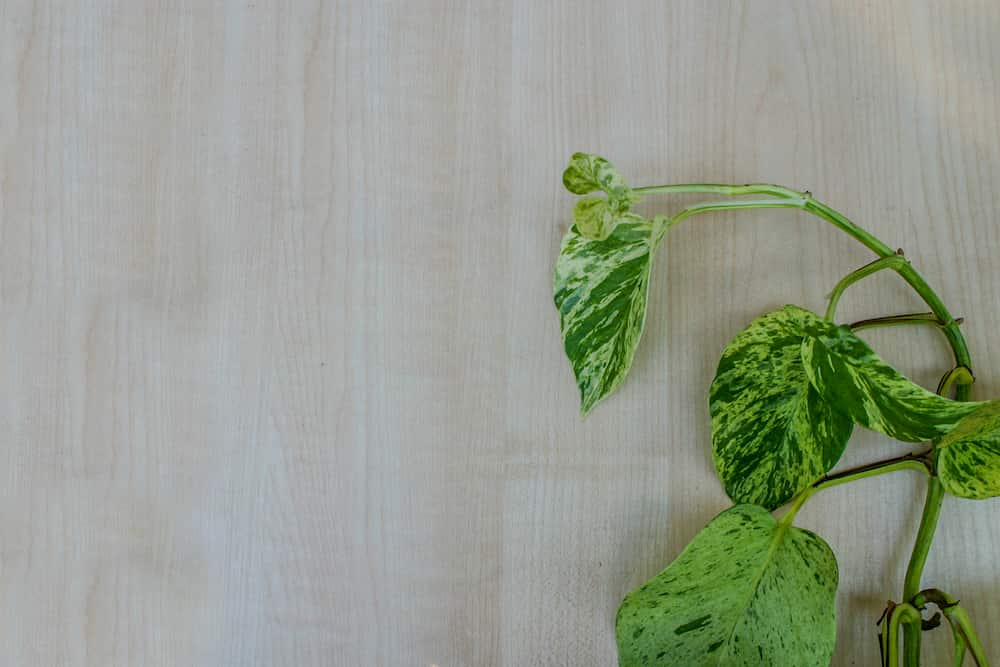
Table of Contents
Why is my pothos not growing?
You may feel like a bad plant parent if your pothos plant is sluggish to grow. But this happens to even the best gardeners!
As you’ll see below, there are a variety of reasons why your pothos may not be growing, most of which are fairly easy to fix.
1. It’s too cold
In the wild, pothos plants are used to warm tropical climates. If the temperature in your home is below 60 degrees Fahrenheit, then your pothos isn’t getting the warmth it needs to grow.
You can solve this problem by moving your plant to a warmer location or by investing in a heat lamp. You can also move it away from areas that have drafts such as doors or windows that are frequently opened or closed.
2. It’s too hot
On the other hand, if a pothos plant is exposed to too much heat, it will wilt and lose moisture from its leaves. In addition to growing more slowly, you may notice the plant has become wilted, dried out, or even sunburnt.
Controlling the temperature in your home is one of the best ways to bring your pothos into the ideal temperature range for growth. Try keeping the temperature in your home below 85 degrees, 90 degrees at most. Make sure your plant is out of direct sunlight, which could also cause it to overheat.

3. The pothos is overwatered
If you’re watering your plant too frequently, the roots may not have a chance to dry out completely between waterings. This could cause the plant to become rootbound or experience fungal growth. While the plant is going through this stress, it will focus its energy on solving these problems rather than growing bigger.
To avoid overwatering your pothos, check the soil before watering it. The top of the soil should be dry to the touch before you water it again. If you’re not sure how often to water your pothos, err on the side of too little rather than too much or water it once every two weeks.
4. The pothos is underwatered
While pothos plants can tolerate periods of time without water, they aren’t drought resistant. They may look fine if you skip watering for several weeks, but their rate of growth will dramatically decrease.
With time, other signs of underwatering in your pothos will appear. These include wilting, yellowing leaves, and dry, crispy leaves. If you see these signs, start watering your pothos more frequently until it recovers.
5. It’s the dormant season
One reason that pothos plants may not be growing is that it’s the dormant season. This typically occurs in late fall or early winter when the days are shorter and the temperature is cooler.
During this time, pothos plants will stop growing and focus their energy on surviving the colder months. This is something that you need to have patience with. The plant will need less watering and fertilizing overall during this time.
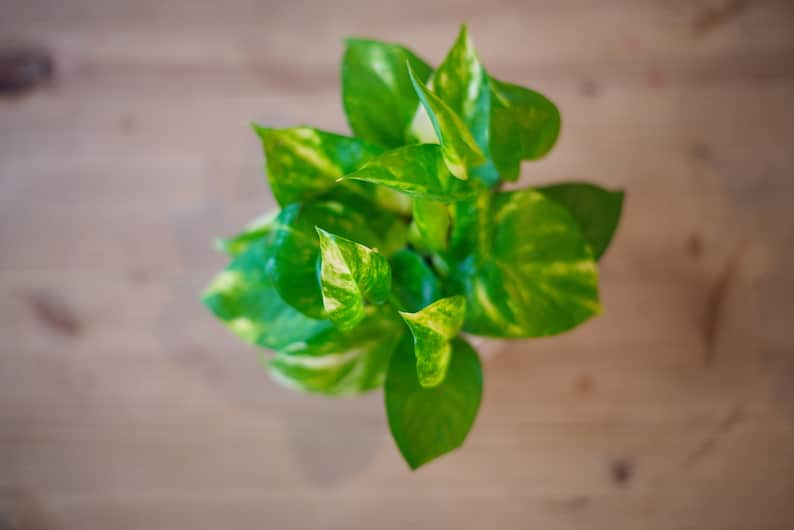
6. Your pothos needs nutrients
If there is a lack of a specific nutrient, it will stunt your pothos plant’s growth. If you’re using old soil for an extended period of time, it may not have any more nutrients to give to the plant.
If your plant is older and hasn’t been fertilized in several years, this is another reason why it may be deprived of nutrients. Pothos plants need a blend of nitrogen, phosphorus, and potassium to grow properly.
Find out more: Best Pothos Fertilizer for Your Plant to Thrive
7. You’re over-fertilizing your pothos
Conversely, if you’re adding too much fertilizer to your pothos plant, this could “burn” the plant and stop it from growing. If you see brown or yellow leaves, this is a sign that you’re over-fertilizing your pothos.
Stop fertilizing your plant for several weeks and see if the problem improves. If not, try using a different fertilizer or diluting the one you’re currently using. Avoid fertilizing your plant as frequently (or at all) when it’s in dormancy.
8. Your plant needs more light
Many pothos plants can survive in low light conditions, but this will certainly slow the growth of the plant. It may also stop the plant from producing large busy leaves and cause it to be leggy, which means that the branches thin out and stretch for light.
Pothos plants like bright indirect sunlight, since these emulate the natural conditions that the plant would experience in the wild as they grow alongside tropical trees.
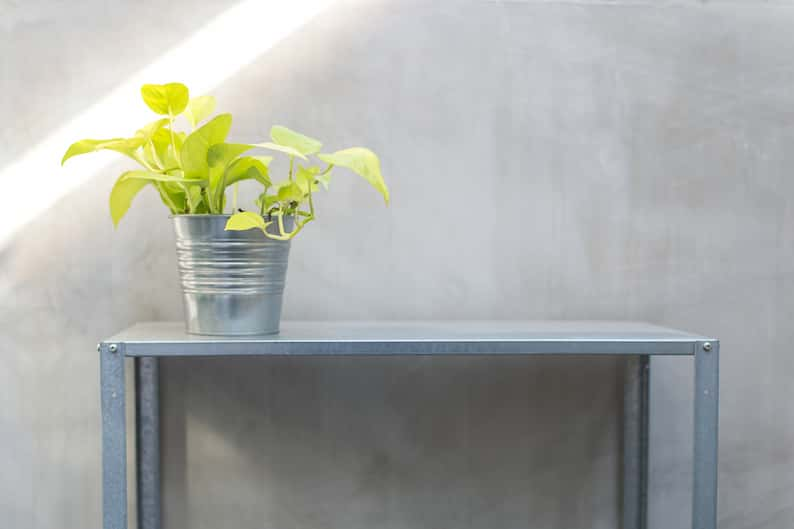
9. The pothos is root bound
A pothos becomes root bound when its container doesn’t give the roots enough room to grow. This can cause the plant to stop growing or even die. You can tell when your pothos is rootbound when you see roots coming out of the drainage holes in the bottom of the pot or cracks in the pot itself.
This makes it hard for the plant to absorb water and nutrients, so it will grow much slower than usual. The longer it is left in this condition, the slower the plant will develop.
10. Your plant has root rot
A pothos not growing quickly may be a sign of root rot. Root rot in your pothos happens when the roots are overwatered and they start to decay. This can happen if the pot doesn’t have drainage holes or if you’re overwatering your plant.
It’s caused by a fungal infection, and it’s one of the most common problems that pothos plants face. If you think your plant has root rot, the best course of action is to remove it from its pot and check the roots. If they’re soft or mushy, then they’ve been affected by root rot and need to be pruned and disinfected.
11. There’s a pest or microbial infestation
Growth can be halted in its tracks if your pothos plant is infested with pests or microbes. These can include aphids, whiteflies, spider mites, mealybugs, and scale. All of these pests will feed on the leaves of your plant and eventually weaken it.
Pests can also introduce diseases to your pothos plant that will further stunt its growth. These include fungal infections like powdery mildew and root rot.

12. You’re not pruning your pothos
Pruning is an important part of plant care, and it’s especially important for pothos plants. Pruning will help to stimulate new growth and will direct growth towards healthy areas of the plant. It will also help to keep the plant tidy and free of dead or dying leaves.
If you don’t prune your pothos regularly, it won’t achieve the bushy, full growth that you’re probably hoping for.
How do I stimulate my pothos’ growth?
Now that you know all of the reasons why a pothos plant may stall in growth, here are some of the best ways to stimulate growth:
1. Give your pothos the right nutrients
As we mentioned before, pothos plants need a balance of nitrogen, phosphorus, and potassium to grow properly. These are typically found in most all-purpose fertilizers. You can also get specific fertilizers for each of these nutrients.
If you add new soil each time you move your pothos into a bigger container, this should also provide an adequate amount of fertilizer to the plants. Compost is also a great natural way to quicken the growth rate of your pothos plant.
2. Give it more light
This is by far the best way to perk up the growth of your pothos plant. This plant loves bright indirect light that won’t burn its leaves but will stimulate its growth. This is especially true if you have a variegated version of the plant that has pale leaves because it can’t take in as much chlorophyll as a green pothos plant such as the Jade pothos.
The more light that the plant gets, the more it will grow. If you don’t have enough light in your home, you can use a plant grow light to make sure your pothos gets the light it needs. Leave it on for 12 to 14 hours each day and make sure it is at least 8 inches away from the leaves to prevent scorching.

3. Create the right temperature conditions
As mentioned above, pothos plants thrive between the tropical range of 60 to 80 degrees Fahrenheit. If the temperature in your home gets much cooler than this, the growth of your plant will slow down significantly.
You can use a space heater to create a warm spot for your pothos or move it closer to a radiator if you’re having trouble keeping the temperature up in your home. You can also bring your pothos outside during the warmer months but make sure to bring it back inside before the temperature drops at night.
4. Dust and mist your plant occasionally
The leaves of your pothos plants need to be clean and dust free in order to breathe and receive sunlight. Support them by regularly dusting them with a soft cloth and misting them with water once a week, which can give a short term boost to your pothos’ humidity levels.
Do this especially if you live in a dry climate or if your home has central heating as this can make the air very dry. Misting will also help to prevent spider mites from infesting your plant, as long as you don’t overdo it.
5. Keep an eye out for pests
Pests can be hard to control, no matter how well you take care of your pothos plant. Because of this, your best line of defense is to regularly check the leaves for signs of pests such as webbing, eggs, or larvae.
If you do find pests on your pothos plant, you can remove them by hand or use a pesticide specifically designed for plants. Be sure to follow the instructions on the pesticide label and only use it as a last resort since it can be harmful to your plant.
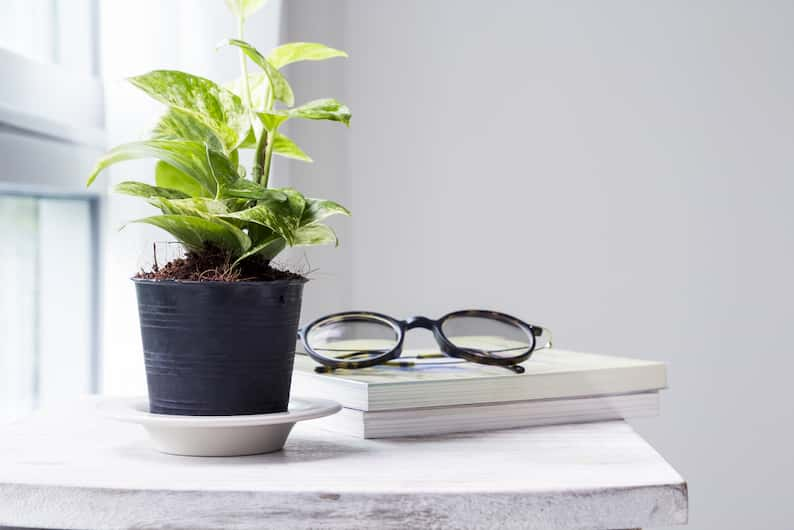
6. Repot your pothos every two years
If you don’t regularly repot your pothos plant, it will become root bound. Unfortunately, pothos plants are sensitive to this, so they need to be repotted every two years to prevent them from becoming stunted in growth.
When you do repot your pothos, make sure to choose a pot that is only one size larger than the current pot, about 1 to 2 inches bigger. You should also use fresh potting mix and be careful not to damage the roots when you transfer the plant.
Related:6 Easy Steps to Turn Your Large Pothos into a Giant
7. Add drainage to the soil
If your soil drains well, you will ensure that your pothos plant doesn’t sit in water and become oversaturated. This can lead to problems such as root rot, so it’s important to make sure your pothos has appropriate drainage through its pot having drainage holes in the bottom. You can add drainage holes with a power drill or by using a sharp knife.
You can also improve the drainage of your soil by adding perlite, sand, or vermiculite to it. Additionally, it’s good to add a layer of gravel or rocks to the bottom of the pot before adding the soil. This will help to keep the roots dry and help them to take up air easily.
8. Prune your pothos regularly
Pruning a pothos plant every 2 to 3 months (or whenever you see yellow leaves) will help to encourage new growth. When you prune your plant, cut the stem about an inch below a leaf node. This is where new leaves will sprout from, so it’s important not to cut too far down.
Pruning also helps to keep your pothos plant from becoming too long or leggy and prevents it from taking over the pot. It’s a good idea to prune your plant even if you don’t see any yellow leaves, as this will help it to grow fuller and healthier.
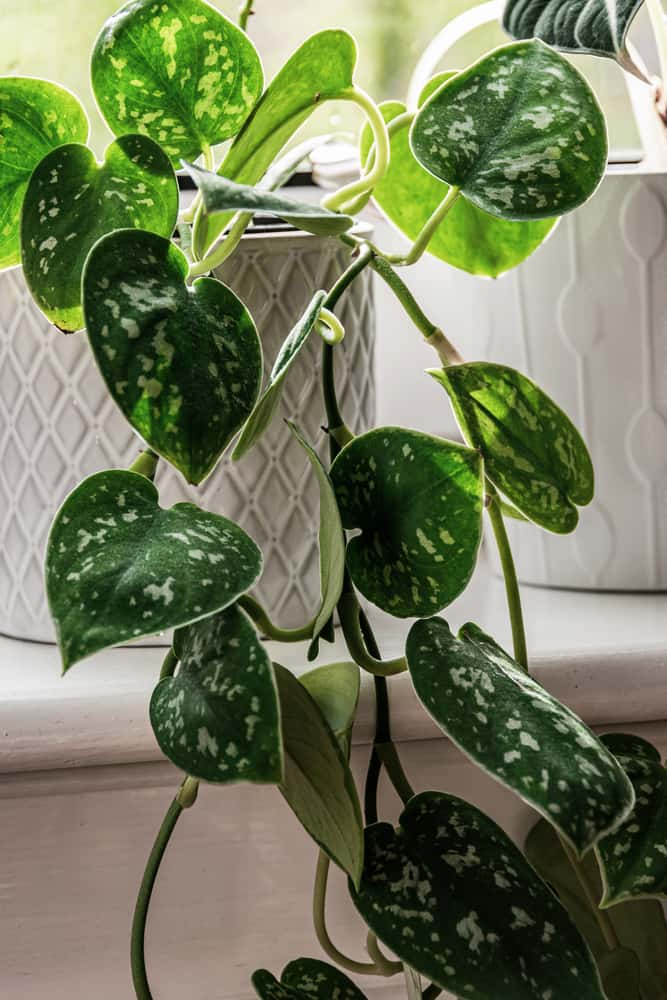
9. Set up a watering schedule
In order to avoid overwatering or underwatering your pothos plant, the best thing you can do is to set up a watering schedule. This means you water your plant on the same days each week and don’t let the soil dry out completely between waterings.
In terms of how often to water your pothos plant, every two weeks is a good bet. Choose a day of the week and set a reminder so you don’t forget to water it. It’s also a good idea to check the soil before you water to make sure it’s actually dry.
Are pothos slow growers?
No, pothos plants tend to grow quickly! Since they are vining plants, they are meant to spread out quickly so that they can secure themselves to support. This is why you often see them growing up on trellises or along walls. It’s a great plant for someone who wants to see quick results and grow a plant fast.
To encourage your pothos to grow quickly, make sure it is getting enough light and water. You can also fertilize your plant every few weeks with a half-strength fertilizer to give it a boost. Remember, too much fertilizer can burn the plant, so don’t go crazy on this or do it during the dormant season.
The rate of growth will depend on the variety of pothos you have. Some varieties, such as the Marble Queen pothos, grow a little slower than others. Variegated pothos plants in general grow a bit slower because they don’t have as much chlorophyll in them, which is what helps the plant to photosynthesize.
That being said, even slow growers will outpace most other houseplants! So if you’re looking for a plant that will quickly fill up a space, pothos is a great option.
Related: How Fast Does Pothos Grow (and How to Make it Grow Faster)?
Why do pothos take so long to grow?
If your pothos is taking a long time to grow, there are several possible reasons. One common one is that the plant isn’t getting enough light. Pothos need bright, indirect light in order to grow quickly. If your plant is sitting in a dark corner, it’s no wonder it’s not growing very fast.
Another possibility is that the plant is getting too much water. Overwatering can lead to root rot, which can stunt the plant’s growth. Make sure you’re allowing the soil to dry out completely between waterings and that the pot has drainage holes in the bottom.
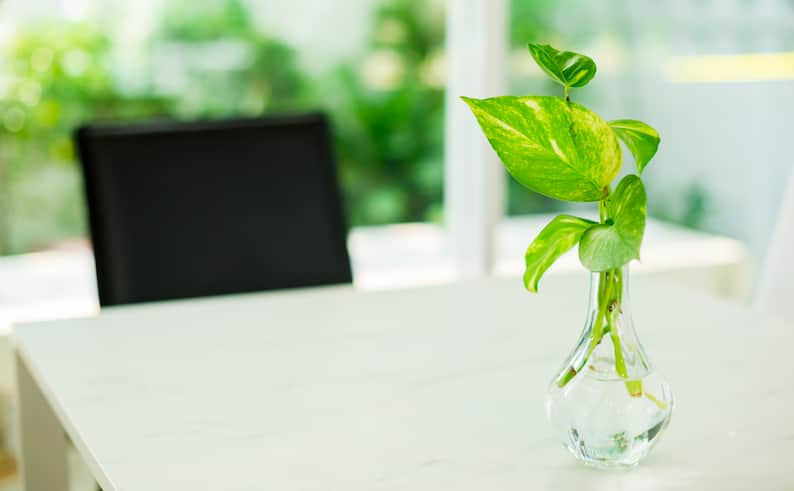
Finally, it could be that the plant is not getting enough nutrients. Fertilizing your pothos every few weeks with a half-strength fertilizer can help to encourage growth. Just be careful not to overdo it, as too much fertilizer can burn the plant.
Some other factors affect the growth rate of the plant, such as its container, soil, the temperature of the room it’s growing in, and the humidity. Examine these factors one by one to see what is the cause of your sluggish pothos growth.
How long does it take for a pothos plant to grow?
In an ideal climate and with the best conditions, a pothos plant can grow up to 18 to 24 inches each month. However, this is in the wild. Indoor pothos plants in excellent condition can grow as quickly as 12 to 18 inches per month.
Different varieties of the pothos plant will have different growth rates. Many variegated or half moon varieties of the pothos plants have slower growth rates because they don’t absorb sunlight at the same rate as other ones.
Sunlight is the biggest factor when it comes to the growing speed of your pothos plant. It can also be temperature, the quality of the soil, and whether or not the plant is fertilized. All these conditions can help the plant to grow at different speeds.
You may also be interested: 6 Simple Steps to Grow Pothos in Water Successfully
When is pothos growing season?
Pothos plants grow rapidly during the spring and summer months when they are exposed to more sunlight. However, they will continue to grow throughout the year if they are kept in a warm environment with bright, indirect light. If you live in a colder climate, your pothos plant may go dormant during the winter months.
You can help to shorten or reduce the dormancy period by using a full spectrum grow light that mimics the plant’s natural conditions. In the tropics, the pothos plant has a very even growth pattern throughout the year. However, if you live in an area with distinct seasons, a grow light could be a big help.
During the growing season, the pothos responds the best to pruning, watering, and fertilizer. These are the best months to give your pothos a growth boost.
How do you make pothos grow faster in water?
Overall, pothos plants grow more slowly in water than they do in soil. This is because they are not able to access nutrients as easily when they are growing in water. However, the best way to make a pothos plant grow faster in water is to change the water regularly and give it plenty of light.
Pothos plants that are growing in water should be given a fresh supply of water every week. The old water should be dumped out and replaced with fresh, clean water. Using distilled or purified water may help the plant to grow more quickly, as it will not have to filter out impurities from the water.
A rooting hormone may also help the plant to grow more quickly in water. This is because it will encourage the plant to produce more roots, which will help it to absorb nutrients more effectively.
To use a rooting hormone, simply dip the cut end of the plant into the hormone and then place it in water. Follow the instructions on the rooting hormone packaging for the best results.
Pothos plants that are growing in water can also be fertilized with a half-strength liquid fertilizer every month. This will help the plant to access the nutrients it needs to grow more quickly.
